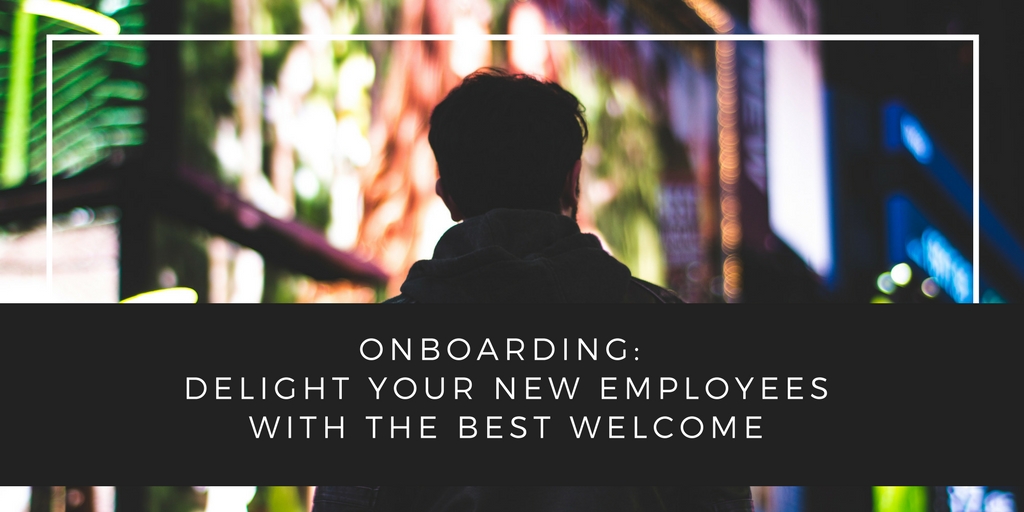Did you know that when an employee joins a new company, this is one of the most important moments of the employee’s relationship with the company? No doubt whatsoever, the first impression always counts and that’s why more and more organizations are working intensively to improve the onboarding experience of new employees in all phases, right from the moment before joining the company.
The onboarding process involves launching a series of actions aimed at facilitating the integration of new employees into the company and assimilating them into the corporate culture. According to a Wynhurst Group study, employees who join the company through a structured onboarding process are 58% more likely to remain in the workforce after 3 years.
If we have invested much effort, care, and resources into our candidates throughout the recruitment process, then we should not slacken either when the candidate is on the verge of joining the company or even weeks beforehand. That’s why I would like to share some ideas and thoughts on this key process.
What are the main goals of an onboarding process?
Once the candidate has accepted our offer, we must get the cogs of our onboarding process moving with several goals in mind:
- Make sure that the candidate ultimately joins the company and does not drop out of the process at the last moment.
- Make the candidate experience unforgettable and make the most of how highly motivated the new employee is at this point in time.
- Create a network that allows the future employee to get to know the members of the organization as soon as possible, thus improving communication channels.
- Speed up the learning curve required for our new employee to achieve high levels of performance in the shortest possible time.
How important is the network of connections in Onboarding?
During the onboarding process, integrating the new employee socially into the company is fundamental. To achieve this, it is crucial to provide newcomers with tools that help them to get to know and interact with their future interlocutors, managers, colleagues and key people –this will make their first day at work easier and pleasanter. Moreover, prompting contact with their future manager is essential for understanding the inner workings of the department and their professional goals. Besides, giving them the chance to talk with their future work team will help them feel integrated sooner after joining the company. And meanwhile, without forgetting that they should also begin interacting with employees from other departments with whom they can share interests and affinities. In this context, it is of interest that the future employee gets help from an appointed buddy – (a work colleague who is not necessarily in the same department, but who shares the same concerns, experiences, hobbies or studies, etc.).
“Good relationships keep us happier, healthier”- HBR Dr. Robert Waldinger
What should you require from Onboarding software?
Nowadays, it is difficult for organizations to carry out an onboarding process without support from a technology tool.
An Onboarding solution, automates and facilitates the employee orientation, immersion and assimilation processes. It first simplifies administrative procedures and facilitates compliance with legal regulations. This reduces associated costs and frees up resources who can concentrate on tasks of greater added value and on smoothing the creation of contact networks and communication with other team members, managers and the organization.
All this comes with the purpose of improving the processes for integrating new employees into the company and boosting the future employee’s engagement and sense of belonging to the organization.
List of essential requirements for Onboarding software
- Provide corporate information about the company.
- Have information about the future employee and allow him to modify and consult any time.
- Facilitate management of all documentation in compliance with the corresponding legislation, which greatly speeds up the onboarding process and improves productivity (contract management, taxes, insurance and legal documentation or information relevant to the company).
- Enable conversation with the manager and with the employee’s future work team.
- Facilitate the new employee’s connection with a pool of people with similar or complementary interests.
- Anticipate career development by giving access to training and development actions right from the moment the new employee has been notified of acceptance into the company.
And after the newcomer joins the company:
- Continue to offer valuable information to become familiar with the company, the sector, the contacts network, etc.
- Offer immersion activities about the company’s business (face-to-face and/or online events). For example: an introductory event styled on the “First day in…” in the sales department, customer service, or “On the policies for…” and others.
- Extending this process to other phases of the employee journey: a practice that is not yet widespread, but which will help to build a good employee experience. This practice applies these onboarding processes throughout all the stages of the employee’s relationship with the organization, that will occur throughout his professional career.
And lastly, always keep top of mind … “personalize, personalize, personalize”
One of the main keys of this process is personalization. This will have a highly positive impact on the employee’s future engagement, permanence and productivity e.
Throughout their relationship with the company, the future employee must have an experience based on their needs, their objectives and preferences at any time. We have already mentioned some examples of various actions for this that we can put in practice, such as the support of a buddy who has similar interests or a chance to access the development plan before joining the company, among others.
However, we must be aware that this customization goes beyond the Onboarding process. After joining the organization, the employee should continue to have an experience that is as personalized as possible through individually tailored programs, such as mentoring schemes so that the employee feels in charge of their own career and is constantly motivated.






